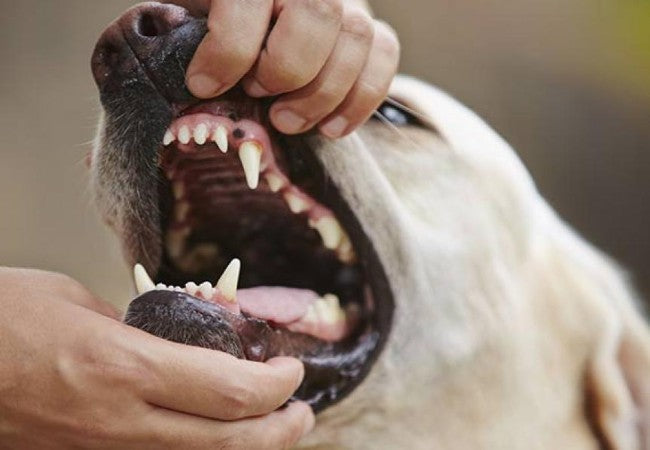Oral Masses & Tumors in Dogs – Vet Guide 2025 🐶🦷🩺

In this article
Oral Masses & Tumors in Dogs – Vet Guide 2025 🐶🦷🩺
By Dr. Duncan Houston BVSc
Hello! I’m Dr Duncan Houston, BVSc, founder of Ask A Vet. Finding a lump in your dog’s mouth—whether painless or ulcerated—can be alarming. Oral masses range from benign gum growths to aggressive cancers, each with different treatment paths and outcomes. This detailed 2025 guide will help you understand the types of oral masses, diagnostic steps, treatment options (including advanced surgery and radiation), and how you can care for your dog after treatment. Let’s keep those tails wagging and those smiles healthy! 🦷✨
📚 What Are Oral Masses?
Oral masses are abnormal growths in the mouth, arising from gums, tongue, jaw, or oral lining. They may be benign (e.g. epulides) or malignant (e.g. melanoma, squamous cell carcinoma, fibrosarcoma). Some tumors, even if benign, can invade underlying bone, so identification and treatment are key.
🧬 Common Types of Oral Masses
- Peripheral Odontogenic Fibroma (Epulis): common benign gum tumor; slow-growing; minimal bone invasion; surgical excision usually curative.
- Acanthomatous Ameloblastoma: benign but locally invasive; may require wider surgery.
- Viral Papillomas: small cauliflower-like growths; often resolve on their own.
- Malignant Melanoma: most common malignant oral tumor; pigmented or non‑pigmented; aggressive and highly metastatic.
- Squamous Cell Carcinoma (SCC): invasive gingival/tongue tumors; bone involvement is common; moderate metastatic risk.
- Fibrosarcoma: locally aggressive; often in palate, gums; low to moderate metastasis.
- Other tumors: mast cell tumors, lymphoma, adenocarcinoma, hemangiosarcoma—less common but possible.
🚩 Signs to Watch For
- Mouth bumps or growths—pigmented or flesh-colored
- Drooling, bad breath (halitosis), bleeding
- Difficulty chewing, eating on one side
- Loose teeth, weight loss, and oral pain
- Swelling in jaws, face, or under the chin.
🔍 Diagnostic Check-Up
- Physical & oral exam: visualizing size, location, bleeding, bone involvement.
- Biopsy or fine-needle aspirate: essential for diagnosing tissue type.
- Imaging (CT/MRI & dental X-rays): assess surgical planning and bone involvement.
- Staging: evaluate lymph nodes and chest radiographs, especially for melanoma.
- Histopathology/immunohistochemistry: determine tumor type, margins, and metastatic risk.
💉 Treatment Options
🔪 Surgery
- Surgical excision with wide margins is first-line therapy for most tumors.
- Mandibulectomy/maxillectomy may be needed for bone-invading tumors.
- Benign growths like epulides usually resolve completely by surgery.
- Post-op reconstruction and cosmetic outcomes are often favorable.
🎯 Radiation Therapy & Chemotherapy
- Radiation often follows surgery for melanoma, SCC, and fibrosarcoma residuum.
- Melanoma may respond to chemotherapy (carboplatin) or immunotherapy (melanoma vaccine).
- SCC & fibrosarcoma may require adjunct radiation; fibrosarcoma less responsive to chemo.
📦 Targeted & Adjunctive Therapies
- Melanoma vaccine boosts immune response post-surgery.
- Tyrosine kinase inhibitors (e.g., toceranib) in mast cell or aggressive tumors.
📅 Prognosis & Survival
- Benign epulides: excellent, usually cured by surgery.
- Ameloblastoma: good with complete removal; low metastasis risk.
- Melanoma: aggressive—median survival ~6–12 months, surgery + radiation; immunotherapy may extend life.
- SCC: moderate spread risk; survival varies—radiation improves outcomes.
- Fibrosarcoma: local control is possible; metastasis is low but recurrence is common.
- Other tumors: outcomes vary—early diagnosis is key.
🏡 Post‑Op & Home Care
- Pain management with vet-prescribed analgesics.
- Soft, palatable diet during the healing phase.
- Oral cleaning—gentle brushing and chlorhexidine rinses.
- Activity restriction to promote healing.
- Monitor surgical site and follow-up veterinary checks.
- Adhere to radiation and chemo regimens if prescribed.
❗ Prevention & Early Detection
- Regular oral exams at home—check for bumps, bleeding, bad breath.
- Annual veterinary dental exams starting from mid-age.
- Maintain good oral hygiene to reduce inflammatory triggers.
✨ Key Takeaways
- Oral masses range from benign epulides to aggressive cancers like melanoma, SCC, and fibrosarcoma.
- Diagnosis requires biopsy and imaging for accurate staging and treatment planning.
- Surgery is the foundation—radiation, chemotherapy, or vaccines complement care.
- Benign tumors have excellent outcomes; malignant tumors need early and aggressive treatment.
- Home care after treatment is essential to healing and oral health.
- Early detection improves prognosis dramatically—stay observant and proactive.
🐾 Ask A Vet
- Consult a veterinary oncologist or dentist via Ask A Vet for tailored diagnostics and treatment planning.
Notice a lump in your dog’s mouth? Don’t wait. Early evaluation means better outcomes—contact your vet or reach out to Ask A Vet. Together, we’ll ensure your pup’s mouth stays healthy and pain-free. 🩺






